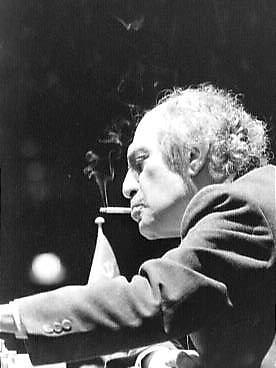
The Best Moves Never Played - Calculation 2
Similarly to classic works of literature, chess games played by World Champions should be studied for the general understanding of how chess ideas evolved over time. There are so many games played by them that sometimes one wonders where to study. Grouping them by topic or common ideas should ease the job. For example, today we will look how great minds sometimes did not see a single move in calculations and ended up losing or drawing the winning game. This is a common experience shared by many and it is interesting to see how World Champions handled blunders. Let us get to the examples.
Petrosian was leading the match by two points and could have extended this lead by winning the next game, effectively clinching the match. He played brilliantly, completely outplaying Spassky but in a time scramble did not find the right continuation. This game could have made it as one of the most brilliant games ever played but its ending did not live up to that standard. It all came down to the extreme pressure of the world championship match. Petrosian was an excellent tactician, so calculating the winning line shouldn't have been too difficult for him even under heavy pressure. He did not notice the 4th move in the winning line, which is a quiet paradoxical move: bringing his knight back to defend against the check and simultaneously putting the black king under check. One does not see this type of move too often in common practice.
The World Champion at that time, Petrosian, was highly traumatized by the ending of this game and took a time out after which he lost his first ever game to Spassky in the 13th game of the match. In the end Petrosian managed to defend the title with the minimal score needed but he could have saved himself some nerves by winning this game.
The next example illustrates the importance of objective analysis and creativity. In his annotations to the game Karpov gives 16. Qb3 an exclamation mark and mentions that black is forced to take his knight, after which his king will be permanently weak. It all makes sense and if I was reading his book, probably I would not consider alternatives. A creative and curious player GM Bologan was not satisfied with this line and kept looking for alternatives and sure enough stumbled into a brilliant continuation. During the game Qb3 is enough to have a long-term advantage, but, if we have extra time and are eager to calculate a few extra lines then we should not limit ourselves with only one continuation and look for the other candidate moves. The challenge with the continuation that Bologan came up with is the assessment of the final position. I used Houdini 3 and it took the engine forever to come up with the right move and even more time to properly evaluate it. So here we cannot speak of the computer era and of computer-like variations, when even the computer has a hard time figuring out the position. All the lines Bologan came up with are human moves. White uses the weakness on f7 to conduct the attack.
Usually, we start calculating the captures and checks and then move on to more complex candidate moves. As the next example shows sometimes queen sacrifices are overlooked possibly due to our mental block, in which we try to keep our queens as safe as possible.
Talking about calculation and classic games and not mentioning Tal would be a sin. There is much analysis published on his games and many of his games are truly brilliant. Here, I would like to show you one moment from the 1960 match annotated by Tal, about how fatigue and tiredness can blind our senses during the calculation process. As Tal mentions these factors can lead to "absolutely delusional variations.". In the following position after Qe8 let's read what Tal has to say:
"In particular, after making the last move, I suddenly "discovered" that White has a "forced win" by continuing 16. Nd3!?. The c-pawn is under attack and White threatens to spoil the pawn structure on the kingside. It seemed to me that the continuation 16... Nxe4 did not work in view of 17.Rxf8 Qxf8 18.Nxe5!? Nxg5 19. Qxh7 mate!! It was only when I was completely panicked and in a frenzy that I was able to realize that in the final position it is a black Knight that "defends" the white Queen at h7. Obviously, this kind of mate is rarely encountered in chess competition. Botvinnik, of course, did not find such a "pretty" variation and continued to develop his strategical idea."
I think this situation has happened to all of us, just not many of us can admit it did. We can be appreciative that Tal shared this experience, which took place during his World Championship match and that we can all learn from it. In such situations one can rely on common sense. On what grounds is white's position suddenly winning? Was Qe8, unpinning the queen and defending the e-pawn, and taking control of the e8-h5 diagonal in any way a bad move? No. So after this small talk one should shake away the ghosts and have confidence in one's position. If the doubts still persist the following advice might be helpful.
One of the methods I use during the game, when bored is to check the pieces' movability. I don't remember who proposed this system but one of my coaches covered it. So the method is to count the squares that your pieces can move to, or take other pieces and do the same for your opponent. For example, in this position the bishop on g5 has movability of 7, the bishop on e2 has 5, so together it is 12. If the movability is about the same then the position is more or less balanced, if the numbers are very different then there is a possibility for a tactical blow due to the heavily active pieces. According to my calculations white's movability is 40, black's 33, not a terribly big difference, especially after the light squared bishop gets into play. Therefore, there is a low likelyhood of a forced win.
Today's article was part two of the Calculation series of the Best Moves Never Played column. Next week we will explore Tactical Vision.






